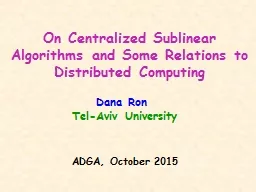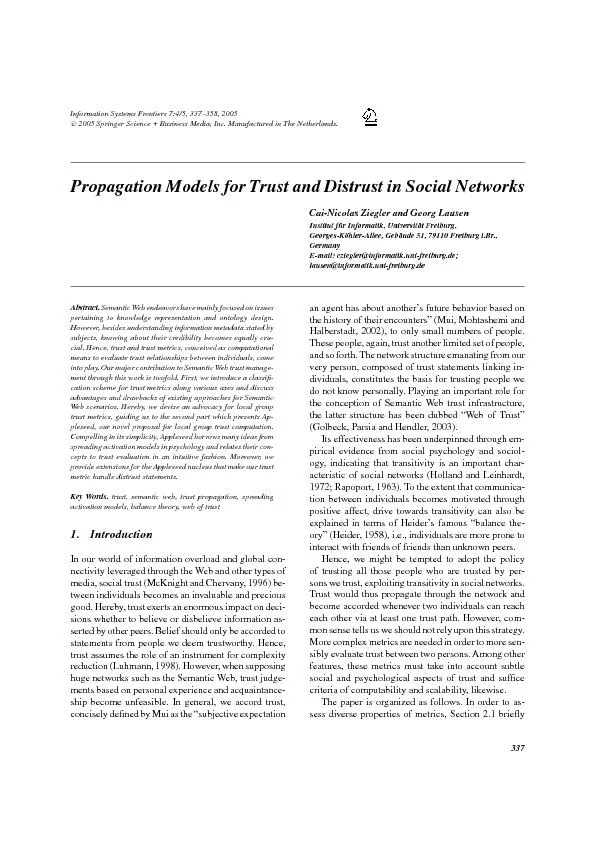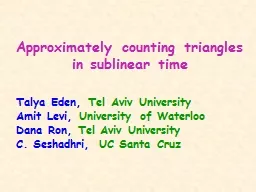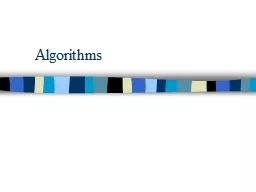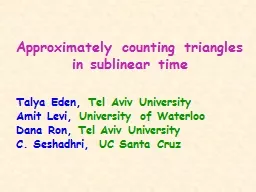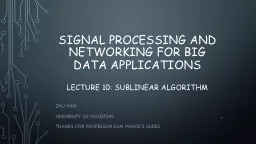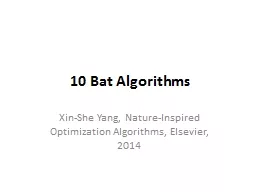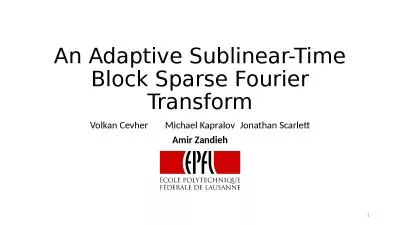PPT-On Centralized Sublinear Algorithms and Some Relations to Distributed Computing
Author : pasty-toler | Published Date : 2018-02-22
Dana Ron TelAviv University ADGA October 2015 Efficient Centralized Algorithms Usually when we say that an algorithm is efficient we mean that it runs in time
Presentation Embed Code
Download Presentation
Download Presentation The PPT/PDF document "On Centralized Sublinear Algorithms and ..." is the property of its rightful owner. Permission is granted to download and print the materials on this website for personal, non-commercial use only, and to display it on your personal computer provided you do not modify the materials and that you retain all copyright notices contained in the materials. By downloading content from our website, you accept the terms of this agreement.
On Centralized Sublinear Algorithms and Some Relations to Distributed Computing: Transcript
Download Rules Of Document
"On Centralized Sublinear Algorithms and Some Relations to Distributed Computing"The content belongs to its owner. You may download and print it for personal use, without modification, and keep all copyright notices. By downloading, you agree to these terms.
Related Documents

